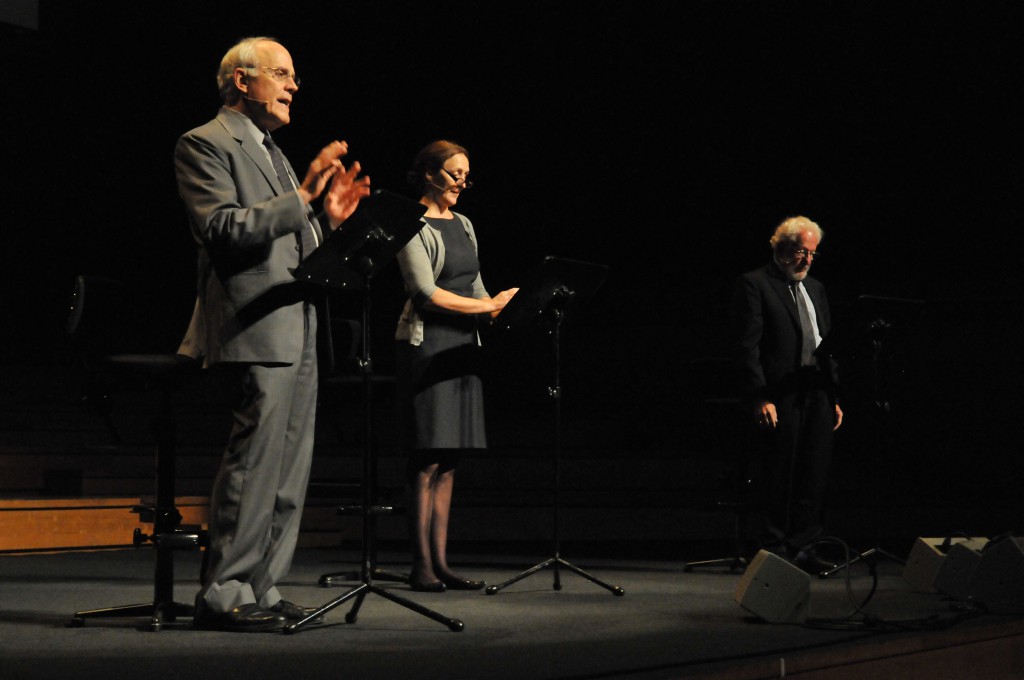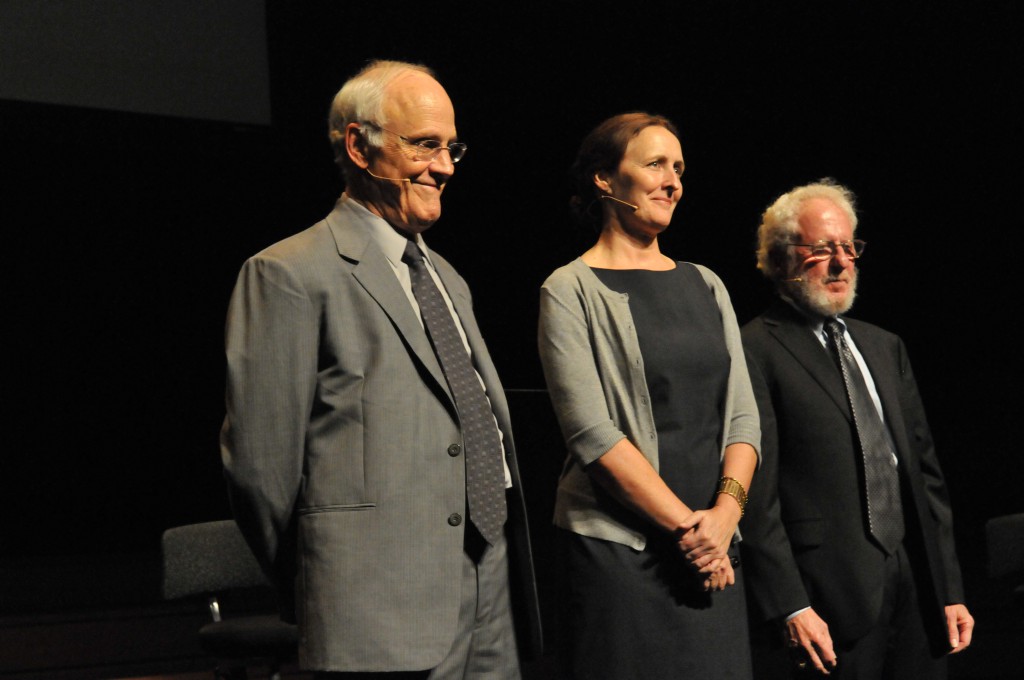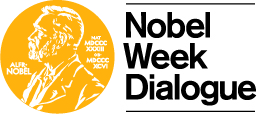Wissenschaft auf der Bühne
BLOG: Quantensprung

Das Theaterstück “Copenhagen” von Michael Frayn erfreut sich auch hierzulande einer großen Bekanntheit. Frayn hat darin eines der berühmten Treffen zweier Physiker in unterschiedlichen Szenarien skizziert. Was könnte geschehen sein beim Treffen von Niels Bohr und Werner Heisenberg im Jahr 1941 in Kopenhagen, nach dem deren Verhältnis als zerrüttet galt?
In Vorbereitung auf das Panel zu neuen Formaten in der Wissenschaftskommunikation während des Nobel Week Dialog am Montag, das ich moderieren darf, habe ich mich mit Nancy Kawalek ausgetauscht. Ihr ist das Kunststück gelungen, die Nobelpreisträger David Gross und Alan Heeger in die Rollen von Bohr und Heisenberg schlüpfen zu lassen. Zwei Laureaten auf der Bühne. Das ist schon ein bemerkenswerter Kommunikationsansatz. Im Folgenden cross-poste ich mein englischsprachiges Posting.
It sounds tempting. Two Nobel Laureates slip into the roles of Niels Bohr and Werner Heisenberg and represent them in Michael Frayn’s successful play “Copenhagen”. This was the idea of Nancy Kawalek, Professor in the Arts, Sciences and Technology at the University of Chicago and an actor by profession. And she realized it.
Nancy got David Gross, 2004 Nobel Laureate in physics, and Alan Heeger, 2000 Nobel Laureate in chemistry, to play the roles of Nobel Laureates Heisenberg and Bohr. First, this was realized at the University of California. And two years ago together with the Irish actor, Fiona Shaw as Bohr’s wife Margrethe, they played at the 100th anniversary of the Solvay Conferences. On Sunday, some invited guests will have the chance to see this play live in Gothenburg. And I am really happy to be one of them.

Credits: International Solvay Institutes, Brussels
“Copenhagen” is about a legendary meeting between Bohr and Heisenberg, that took place in 1941. Before this meeting Bohr had been Heisenberg’s surrogate father. In the 1920s, they had worked closely together on theories on quantum mechanics and uncertainty. The meeting in 1941 had something to do with potential nuclear weapons – and both men were on different sides of the international conflict. All we know is, the meeting ended in a personal conflict that destroyed the friendship. Using one of the fundamental findings of Heisenberg and Bohr, “uncertainty”, Michael Frayn’s play is not a deterministic array of events, but a variation of what could have happend in 1941.
Plays like this bring science on stage and may lead to different, more emotional approaches for people to sciences. Science journalists know about this emotional way. “Storytelling” is a buzzword for this. Nancy Kawalek believes in such formats. Since many years she connects art and sciences. “Science plays on stage have to really awake people on a human and an emotional level”, she explained to me.
In 2005 Kawalek founded STAGE (Scientists, Technologists and Artists Generation Exploration), a programme to encourage collaboration between scientists and artists –originally at the University of California, Santa Barbara. Part of STAGE is the international script competition for the best play about science and technology that awards 10,000 USD. The most prominent rule for this competition, which has already taken place 5 times, is: “Science and/or technology must figure prominently in the script, whether in content or form or both.” The numbers are impressive: More than 200 manuscripts were submitted from scientists and professional writers to the committee in each of these cylces.
I am looking forward to hearing more about this competition and other projects Nancy Kawalek launched. She will tell us about her ambitions and experiences at our lunch session “New formats for communicating science” at the Nobel Week Dialogue on Monday.

Credits: International Solvay Institutes, Brussels
 Dieser Beitrag stammt aus dem offiziellen Nobel Week Dialogue Blog.
Dieser Beitrag stammt aus dem offiziellen Nobel Week Dialogue Blog.

